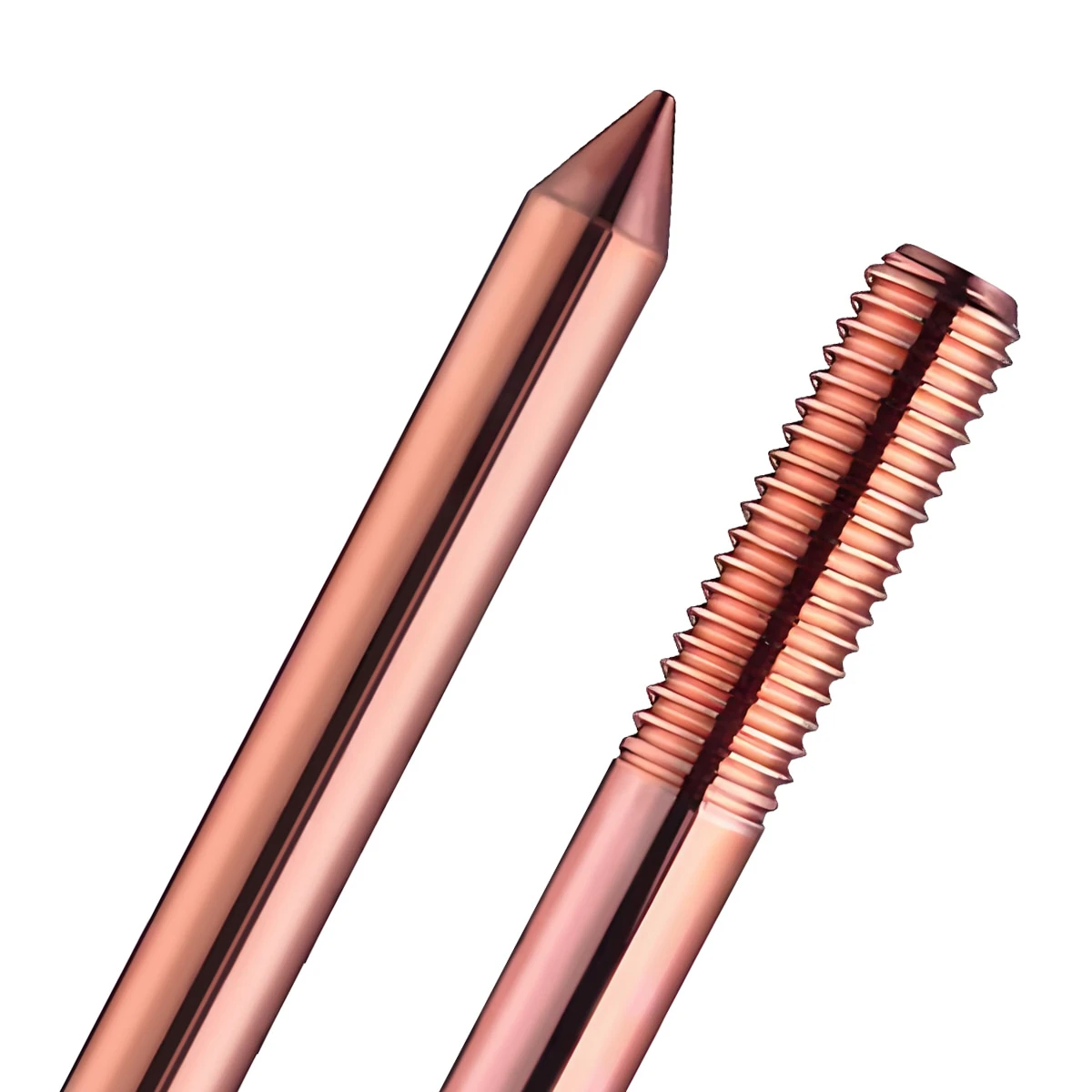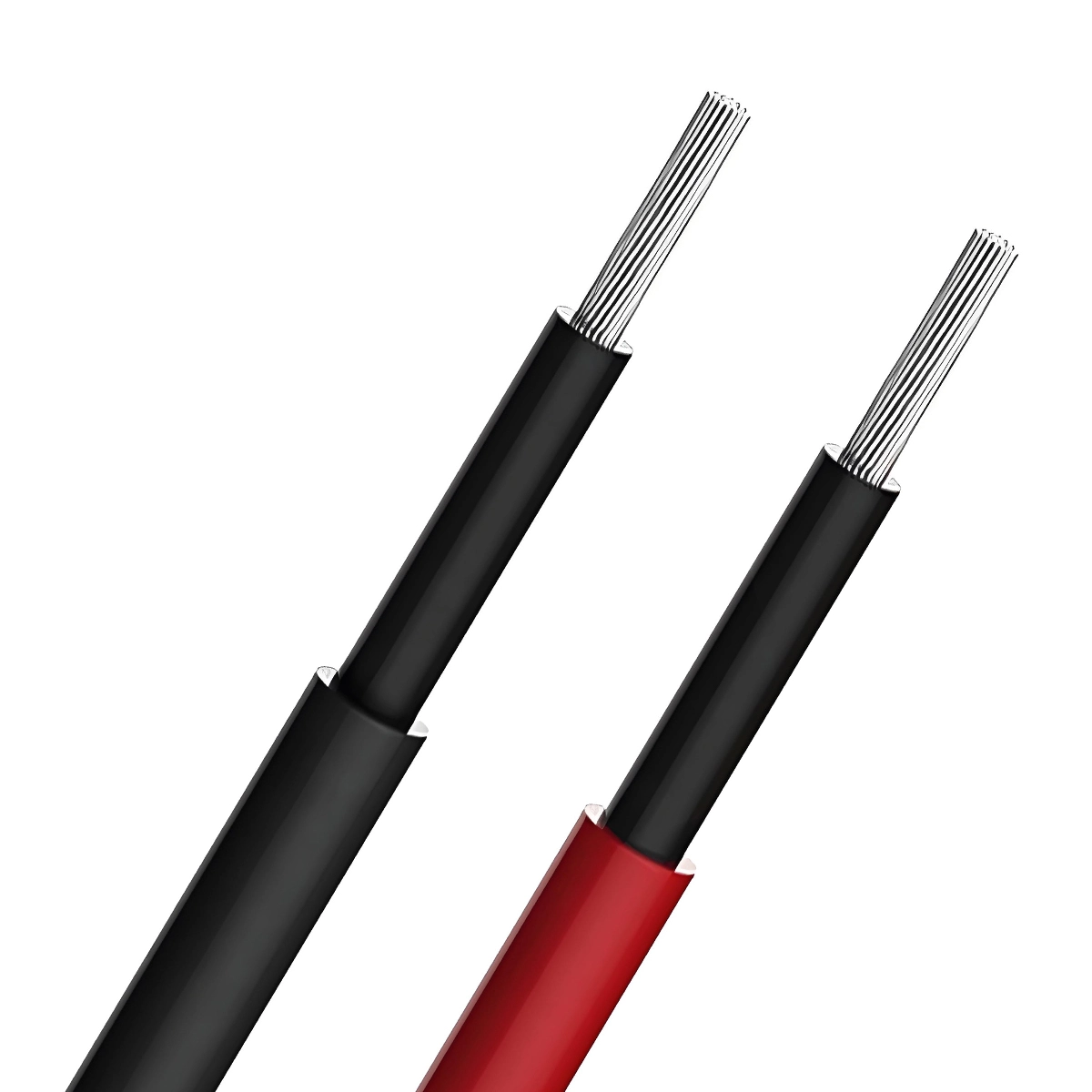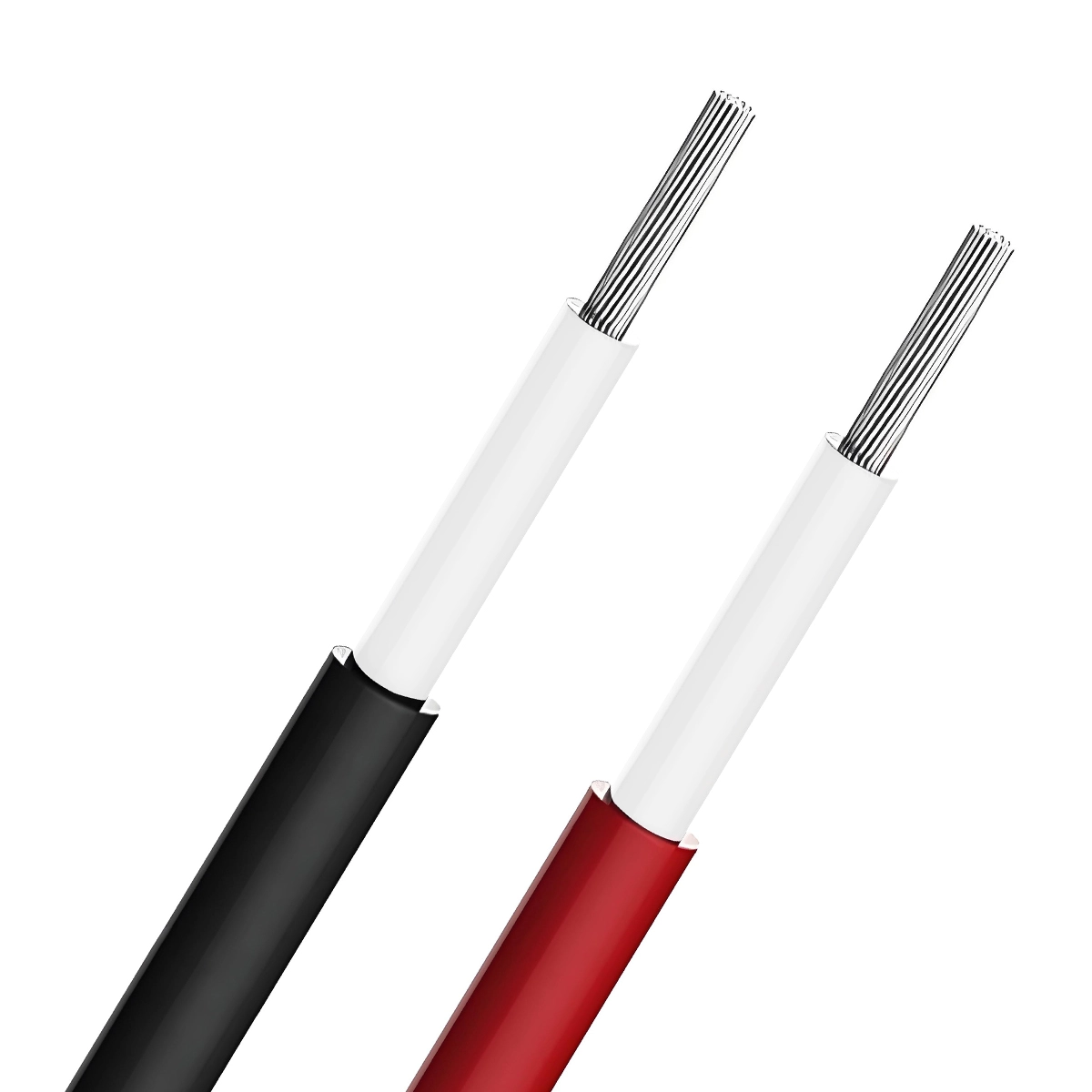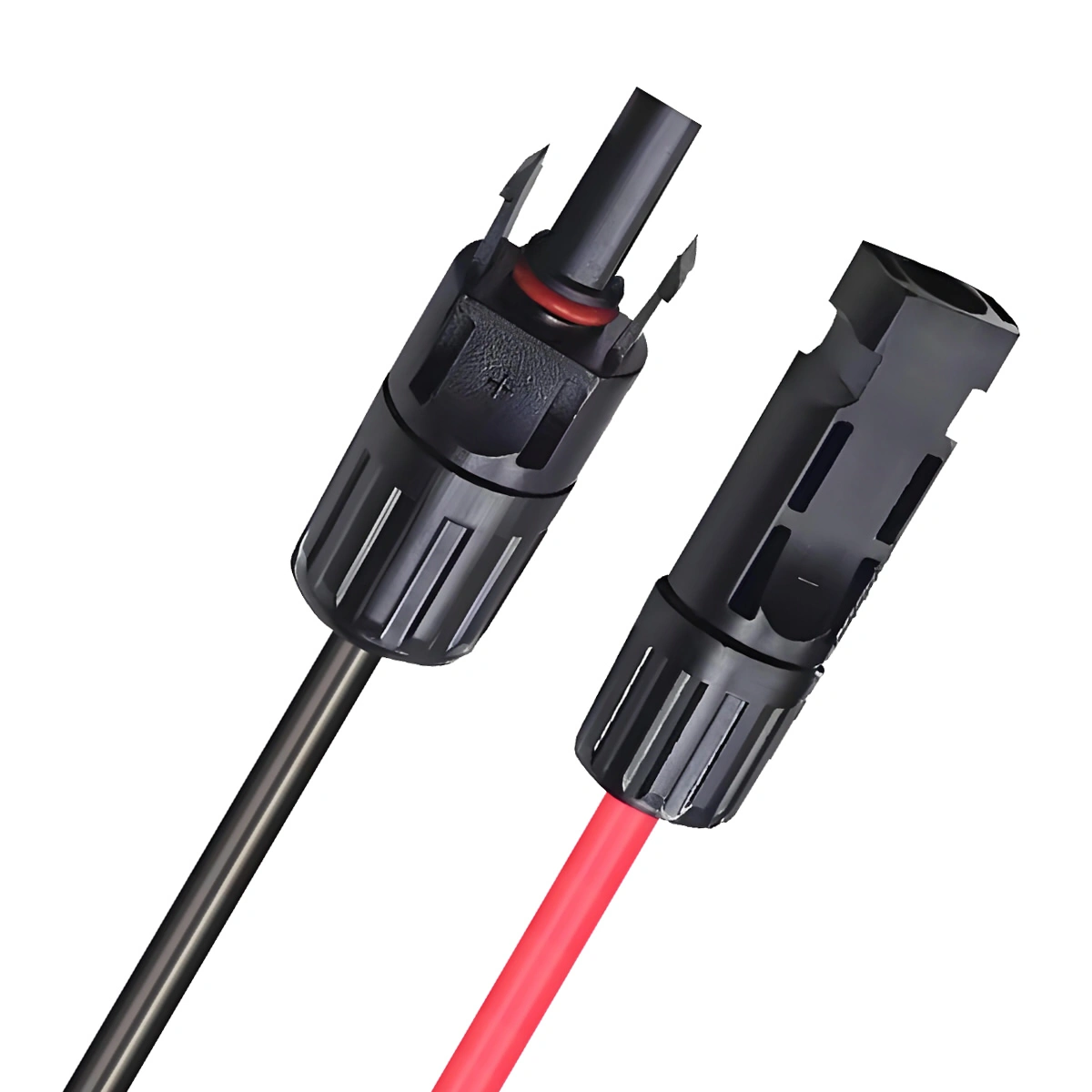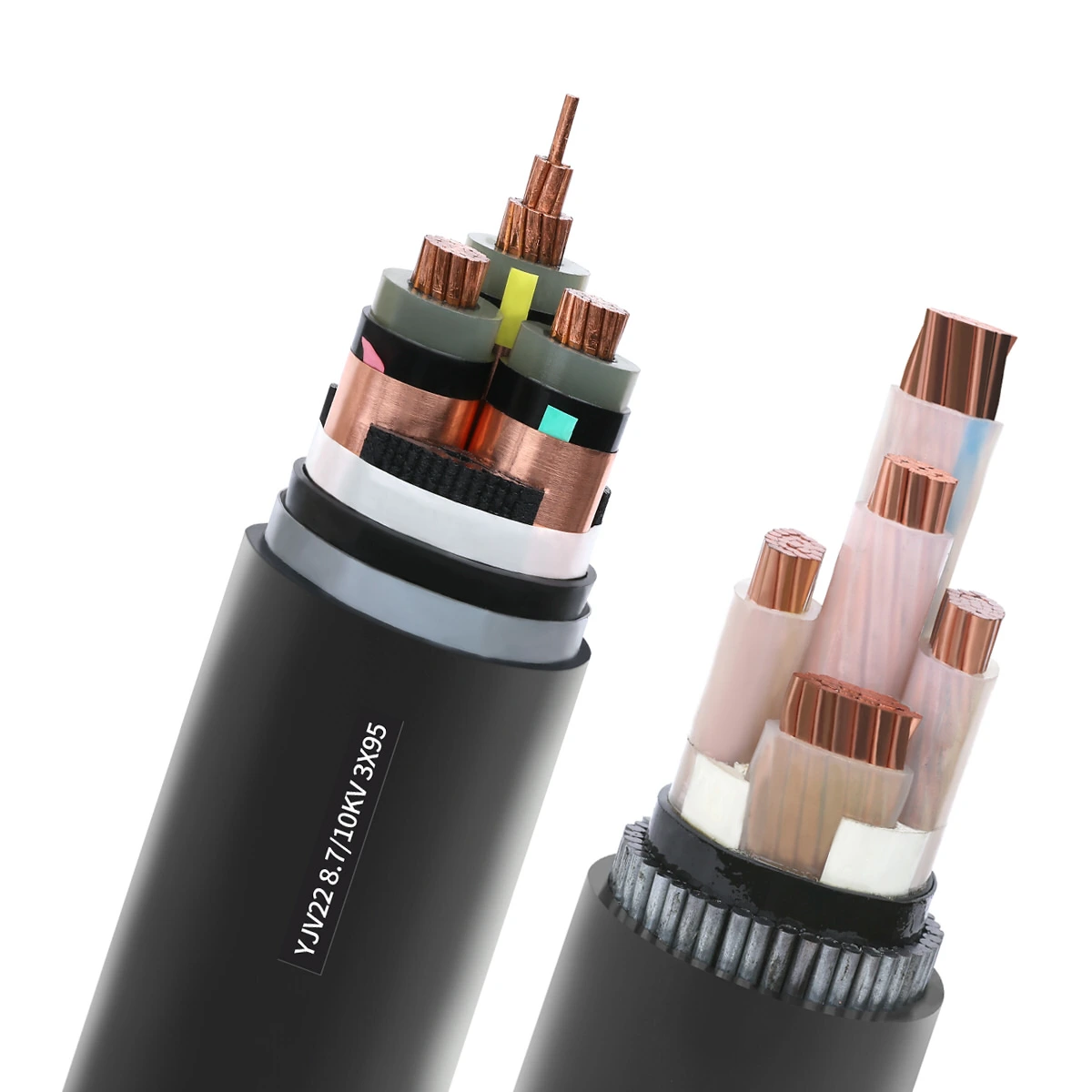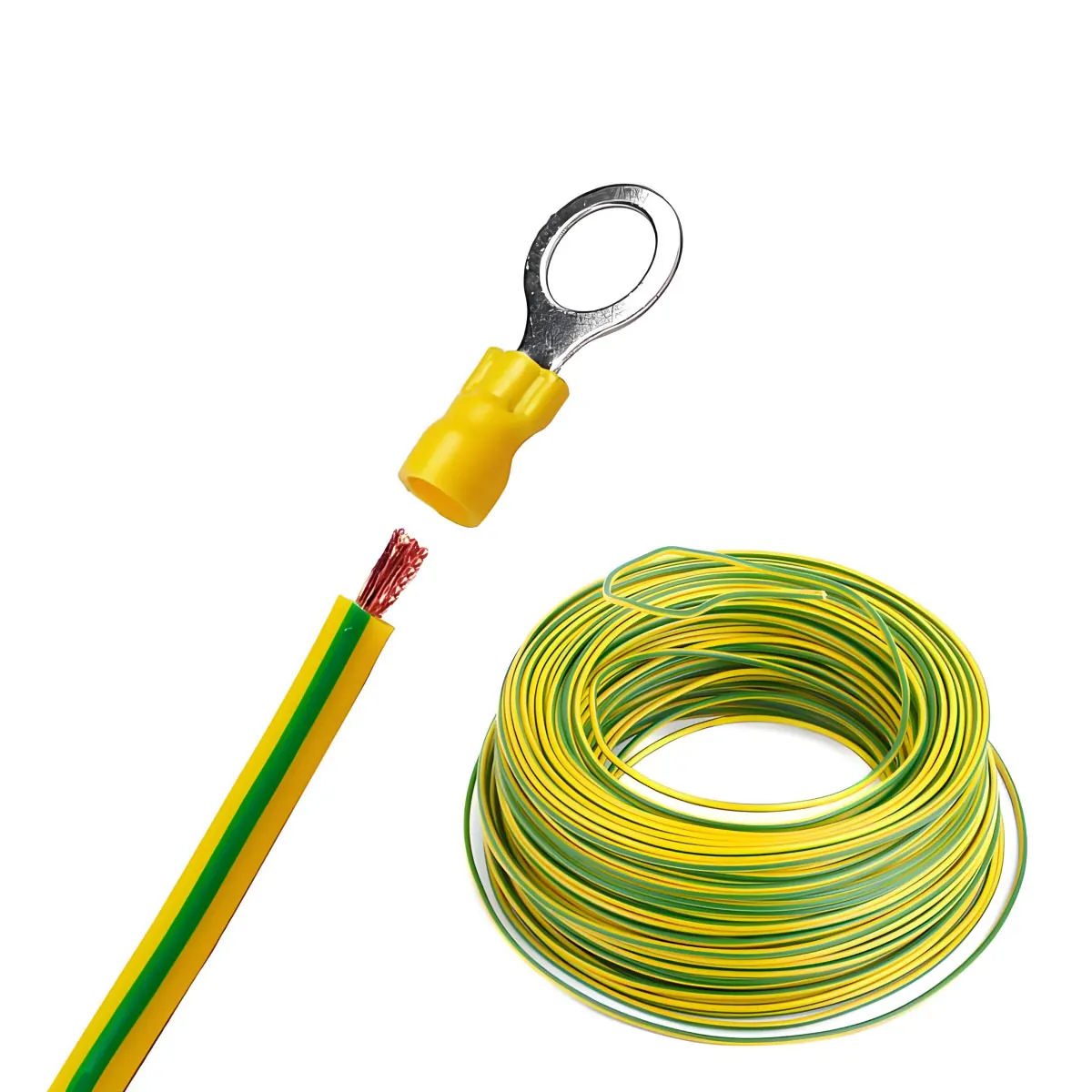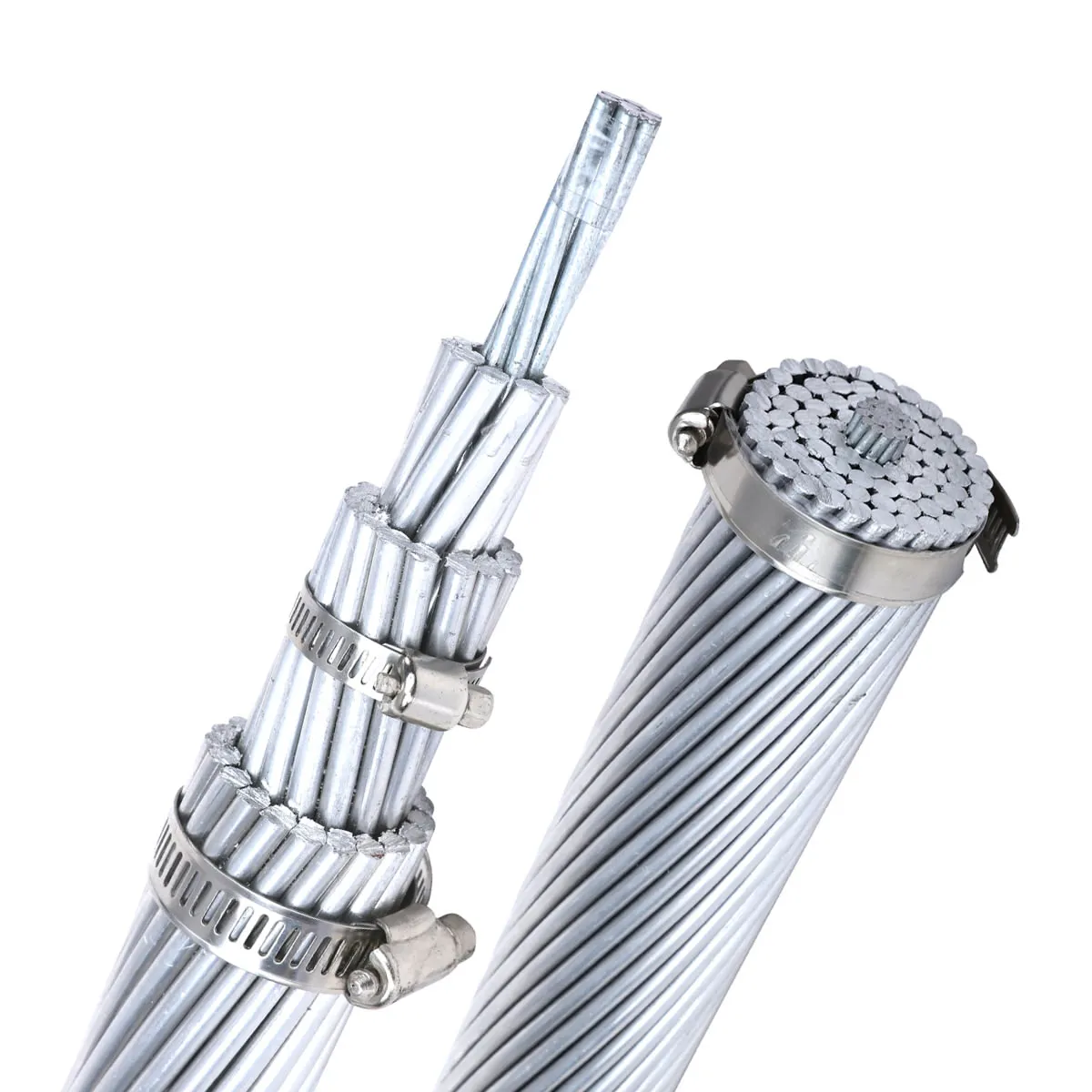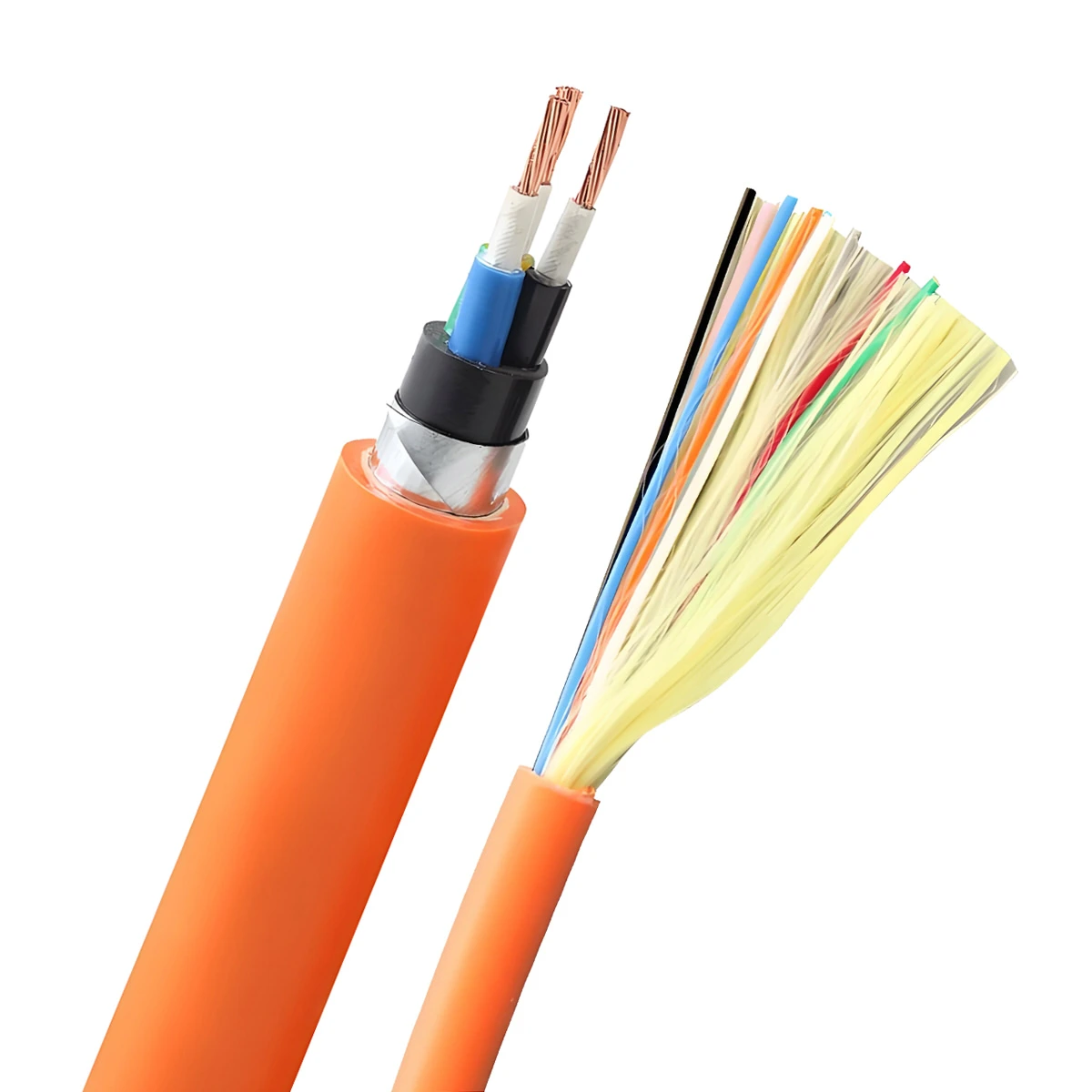アースロッド
太陽 アースロッド 主にソーラーパネルマウントの接地に使用されます. 太陽光発電モジュールと地面には潜在的な違いがあります, それは、貧しい環境での漏れや誘導結合などの断層につながる可能性があります. 太陽光発電システムの通常の動作と安全性を確保するため, 信頼できる接地システムを確立する必要があります.
太陽光発電システム用のZMSのアースロッド製品の範囲には、銅接地棒が含まれています, 銅結合鋼と亜鉛メッキ鋼.
ZMSはさまざまな形のさまざまな接地材料を提供します, 円筒形やフラットストリップなど. 円筒形のアースロッドは、さまざまなアプリケーションに合わせてさまざまなスタイルで利用できます: 1つの先の尖った端と1つのフラットエンド, 1つの先の尖った端と1つのねじ込み端, 両端がねじ付き, 等.
アプリケーション:
- ソーラーパネルマウントの接地
- インバーターの接地
- 配布ボックスの接地
- システムの稲妻保護の接地
- 通信ラインシールドの接地
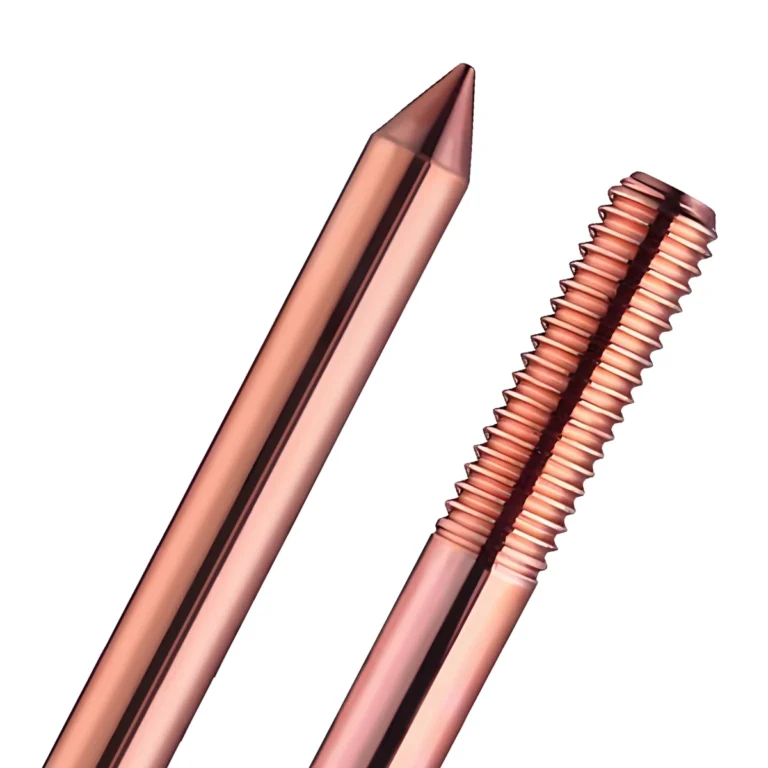
ZMSソーラーアースロッドシリーズ
ZMSは亜鉛メッキ鋼を提供します, 銅結合鋼, 通常のPVプロジェクトのための裸の銅接地ロッド. また、銅亜鉛合金アースロッドとステンレス鋼のアースロッドを生産することもできます, 腐食性媒体を持つ環境に適しています.
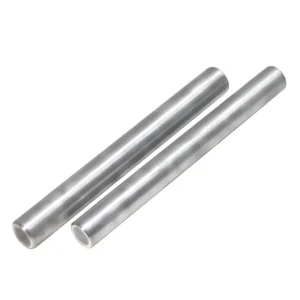
亜鉛メッキ鋼
Galvanized Steelは、一定レベルの腐食抵抗と導電率を持つ従来の接地材料です. 一方、この資料は初期コストが最も低い場合があります, 寿命が短く、メンテナンスコストが高くなると、長期的にはより高価になります. ZMSの亜鉛メッキスチールアースロッドは、耐食性要件が低い地域での短期PVプロジェクトにより適しています.
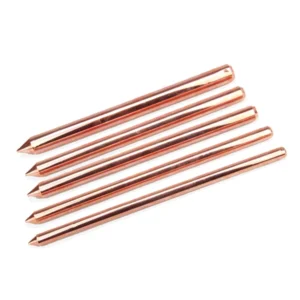
銅結合鋼
銅結合鋼は、鋼の機械的特性と銅の導電率と腐食抵抗を組み合わせています. 近年、太陽光発電システムで最も広く使用されている接地コンポーネントになりました. ZMSは使用します 99.9% 低炭素鋼のコアに電気めっきされた純粋な銅, その結果、導電率が高くなります, 高い引張強度, 強い腐食抵抗, 簡単にインストール. ZMS銅結合グランドロッドは、スチールコアにニッケル層を備えています, 次に、電解銅層で覆われます. このプロセスにより、銅層とスチールコアの間に永続的な分子結合が保証されます, ロッドが曲がっている場合でも亀裂を防ぎます.
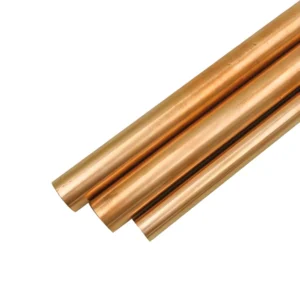
裸の銅導体
純粋な銅材料は、優れた導電率と耐食性を提供します. その導電率は銅結合鋼の導電率よりも優れています. 純粋な銅のアースロッドには、 40 年が柔らかく、曲げられる傾向があります, より硬い土壌での掘削に不適切にします. コストが高いため, 純粋な銅のアースロッドは通常、非常に高い導電率を必要とする状況で使用されます.

銅結合スチール製の接地ロッド仕様
| 構造形式 | 直径 /mm | 長さ /mm | 重量 /kg |
| 標準 | 14 | 2500 | 3.16 |
| 14 | 3000 | 3.79 | |
| 16 | 2500 | 4.00 | |
| 16 | 3000 | 4.80 | |
| 18 | 2500 | 5.00 | |
| 18 | 3000 | 6.00 | |
| 20 | 2500 | 6.25 | |
| 20 | 3000 | 7.50 | |
| 22 | 2500 | 8.00 | |
| 22 | 3000 | 9.60 | |
| 25 | 2500 | 9.80 | |
| 25 | 3000 | 11.76 | |
| 組み合わせた | 14.2 | 1200 | 1.53 |
| 14.2 | 1500 | 1.88 | |
| 17.2 | 1200 | 2.18 | |
| 17.2 | 1500 | 2.73 |
ユニークな製造プロセス: コールドローリングとホットドラウングの生産プロセスを利用しています, ZMSは、銅と鋼の間の冶金結合を達成します. これにより、ロッドを切断せずに単一の金属のように描くことができます, ピーリング, またはひび割れ.
優れた腐食抵抗: 複合インターフェイスは、残基のない高温溶接によって作成されます, 結合面に腐食がないことを確認してください. 表面上の厚い銅層は、強い腐食抵抗と長いサービス寿命を提供します (以上 30 年), 接地ネットワークのメンテナンスコストの削減.
電気性能の向上: 高品質の銅の外層は、優れた導電率を提供します, 従来の材料と比較してはるかに低い固有の抵抗をもたらす.
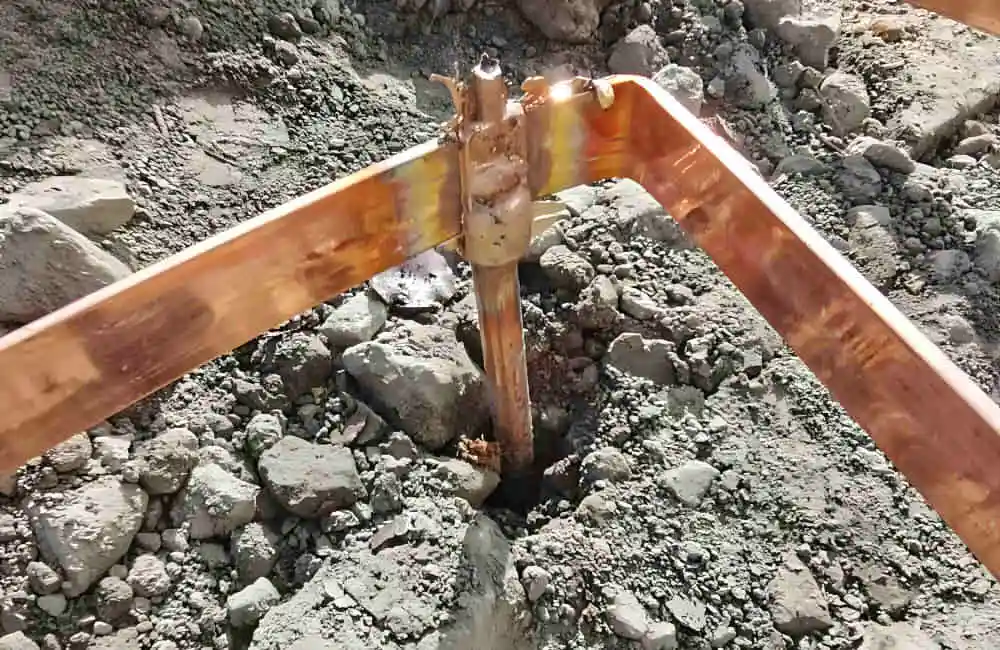
ZMSの特徴銅結合スチールアースロッド
広い, 安全, 信頼できるアプリケーション: この製品は、さまざまな土壌水分の建設に適しています, 温度, ph, および抵抗率.
安全で信頼できる接続: 特殊な接続チューブまたはThermite溶接を使用すると、しっかりと安定したジョイントが保証されます.
簡単で迅速なインストール: 完全なアクセサリーと簡単なインストールを備えています, 建設速度は大幅に改善できます.
接地の深さの増加: 特別な接続方法により、ロッドが浸透することができます 35 地下メートル, 特別なアプリケーションの低抵抗要件を満たす. 1つの先の尖った端と1つのねじの端を持つアースロッドは、同軸コネクタを使用して直列に接続できます, 接地の深さの柔軟な調整を可能にします.
低い建設コスト: 純粋な銅棒と接地ストリップを使用した従来の方法と比較, コストは大幅に削減されます.
よくある質問
なぜ太陽光発電システムを接地しなければならないのか?
太陽光発電システムの接地は、太陽光発電設置担当者が最も見落としがちな問題の 1 つです, 特に、接地と雷保護があまり考慮されていない小容量の太陽光発電システムでは.
しかし, アースがされていない場合, アースとの絶縁抵抗が低いか、過剰な漏れ電流が原因でエラーが発生する可能性があります。, 発電に影響を与え、個人の安全を危険にさらす可能性があります. さらに, シールドされていない金属部品や高い位置にある金属部品は落雷の影響を受けやすくなります. 接地なし, 機器が雷に打たれる可能性があります, 太陽光発電システムに重大な損害を与える.
太陽光発電システムの接地には、主に太陽光発電コンポーネント側の接地が含まれます。, インバータ側, および配電盤側. 適切な接地は、ソーラーシステムの安全性を高めるだけでなく、その寿命を延ばします。.
太陽光発電システムの接地に使用する材料はどの材料を使用する必要がありますか?
亜鉛メッキ鋼板のほうが安い, しかし、多くの溶接接合部があります, その結果、建設効率が低下し、建設コストが高くなる. 純銅は導電性に優れるが高価である. 銅結合鋼, しかし, 費用のみ 9.4% 亜鉛メッキ鋼よりも優れており、はるかに長い耐用年数を提供します. したがって, 銅接着スチール電気アース棒は、通常、太陽光発電システムの主要な接地材料として選択されます。.
| アースロッド素材 | 亜鉛メッキ鋼 | 裸銅 | 銅結合鋼 |
| 抵抗率ω.mm | 1.7×10^-7 | 1.73×10^-8 | 銅層の厚さに依存します |
| 密度G/CM3 | 7.8 | 8.9 | – |
| 耐食性 | 0.065 mm/a | に相当する腐食率 1/7 亜鉛メッキ鋼の | 銅に匹敵します 銅層の破壊の前 |
| プロセス特性 | 大きなサイズの素材, 高い溶接要件, 複雑な構造 | 単一プロセス, スポット溶接よりも速い | 単一プロセス, スポット溶接よりも速い |
| 営業生活 | 7 – 13 | > 40 | > 40 |
| 料金 | 低い | 高い | 中くらい |
一般的に使用されるアース棒の仕様?
銅結合鋼
太陽光発電システムにおいて, 銅接合鋼接地材の水平接地体は、一般的にΦ10-Φ12銅接合丸鋼を使用します。, 通常の製造長さは 100 リールあたりのメートル. 接地電極はΦ14またはΦ17.2の銅接合鋼棒を使用.
接続方法: テルミット溶接 (外部電源やアセチレンは必要ありません), 接合材には純銅を使用, 溶接箇所の防食対策が不要.
亜鉛メッキ鋼
従来の接地グリッドでは, 溶融亜鉛メッキ鋼製の水平接地体は、一般に 50X5 または 60X6 亜鉛メッキ平鋼の仕様で設計されています。, 製造長さ 6 1個あたりメートル. 垂直接地電極は50X5溶融亜鉛メッキ山形鋼管またはΦ50亜鉛メッキ鋼管を使用, 接地電極の長さは 2.5 1個あたりメートル.
接続方法: 電気溶接, 溶接箇所に防食処理が必要な場合, 防錆塗装2回塗り、アスファルト塗装1回塗りなど.
裸銅
純銅アース材用, 水平接地体は通常 25 を使用します×4, 40×4, 50×5, または60×6 mm銅条, または S70/S95/S120/S150/S185/S240 mm 裸銅線. 垂直接地体には通常 16 個が使用されます。×2500 mmまたは20×2500 mm銅棒, または50×3000 mmまたは55×2500 mm純銅電解イオン接地電極.
接続方法: テルミット溶接, 火災泥溶解溶接, またはホットメルト溶接.
太陽光発電システムにアース棒をどのように設置すべきか?
工事中, 接地棒の取り付けは非常に柔軟で、現場の特定の条件に適応できます。. さまざまな方法が使用できます, 重いハンマーや電気ハンマーで電気接地棒を土壌に直接打ち込むなど. ロッドが打ち込めない複雑な土壌条件の場合, アースロッドを取り付ける前に、最初に穴を開けることができます.
均一な土壌条件で, 取り付けに重いハンマーを使用し、単一のロッドを駆動する場合, ドリルビットを取り付けることをお勧めします (耐衝撃ボルト) ロッドが深く打ち込まれたときに銅層が損傷するのを防ぐために、ロッドの尖った端にあります。. より深いグラウンディングのために, コネクタを使用して複数のロッドを接続し、希望の長さを実現できます。, 良好な電気接続を確保する.
深穴加工が困難または不可能な場合, 掘削ツールは岩石を貫通するために使用できます. 穴あけ後, アース棒を取り付けるには 2 つの方法があります:
1. コネクタを使用してロッドを希望の長さに接続します. 意図した深さまで穴あけが完了したら, 穴を抵抗率低下剤で満たし、穴が埋まるまで水を追加します。.
2. コネクタを使用してロッドを希望の長さに接続します. 所定の深さまで穴あけ後, 抵抗率低下剤を水と混合し、ロッドを完全に包み込むように穴に注ぎます。.
太陽光発電システムに必要な接地とは?
コンポーネント側の接地:
- モジュールフレームの接地: モジュールのアルミニウムフレームがマウントに接触しても、効果的な接地とはなりません。. 効果的に接地するには、モジュールの接地穴をマウントに接続する必要があります。. モジュールのアース穴は通常、ストリング接続に使用されます。, 両端のアース穴が金属マウントに接続されている.
- マウントアース: いつもの, 丸鋼, 亜鉛メッキ鋼棒, または銅で接着された鋼棒が接地に使用されます, 接地抵抗は 4Ω 以下である必要があります.
インバータ側接地:
- 運用上の接地: インバータの PE 端子は配電ボックス内の PE バスバーに接続されています, 配電ボックスを介して接地されます.
- 保護接地: インバータシャーシの接地穴は、インバータとオペレータの安全を保護するための繰り返し接地に使用されます。. インバータ シャーシの保護接地には、別個の接地電極を使用することも、配電ボックスと共有することもできます。.
配電ボックス側接地:
- 避雷接地: AC 側の雷保護は、ヒューズまたは回路ブレーカーとサージ保護装置で構成されます (SPD). SPD の下端は配電ボックスの接地バスバーに接続されています.
- ボックス接地: 規定によると, 配電ボックスの金属フレームとベーススチールは接地するか中性線に接続する必要があります. 確実な接地を確保するには、キャビネットのドアとキャビネットの本体を相互接続する必要があります。.
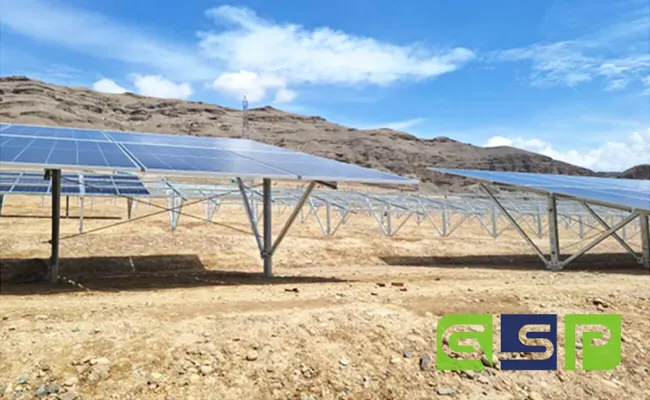
プロジェクトのハイライト
ZMSと提携 グリーンステートパワー (GSP), 再生可能エネルギーインフラのパイオニア, 記念碑を装備する 10 カブールのMWP太陽光発電プロジェクト, アフガニスタン.
ZMSは太陽光発電プロジェクトを包括的に分析し、以下の情報を提供しました。 1X10 および 1X6 ソーラー ケーブル H1Z2Z2-K, 3X300 LV ケーブル, 3X300 MVケーブル, ACSRと同様に 185/30 架空ケーブル. これらを補完するのが、PV コネクタや注意深く厳選されたツールボックスなどの重要なアクセサリです。.
ZMS の品質と信頼性への取り組みにより、スムーズな設置と運用効率が促進されました, 地域の持続可能なエネルギーインフラへの貢献.
ZMSサービス
カスタマイズされた製造
We understand that every customer's needs are unique. したがって, パーソナライズされたソーラーケーブルのカスタマイズサービスを提供します, 特定のプロジェクト要件に応じて、ケーブル仕様から接続インターフェースまであらゆる詳細を調整します, 最大限の互換性と効率性を確保する.
グローバル迅速対応物流
グローバルな物流ネットワークを活用して, ZMS は、太陽光発電ケーブルの注文が世界の隅々まで安全かつ迅速に届くことを保証します。. 弊社の専門物流チームが輸送のあらゆる段階を監視し、お客様の商品をタイムリーに配送できるようにします.
テクニカルサポート
ZMS's technical support team is always on standby. どのような技術的な課題に直面しても, 迅速な対応と専門的なソリューションを提供できます, 安心したユーザーエクスペリエンスを確保する.
グリーン生産
当社のソーラーケーブルと付属品は、製造工程において環境基準を厳格に遵守しています。, 環境への影響を最小限に抑える. ZMSを選択することで, 高品質の太陽光発電ケーブルに投資するだけでなく、地球の持続可能な発展にも貢献します.

